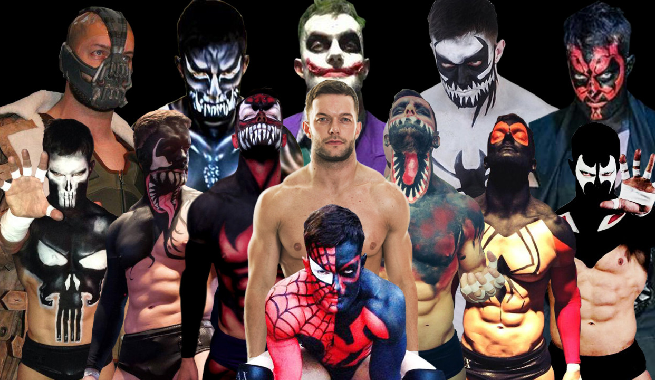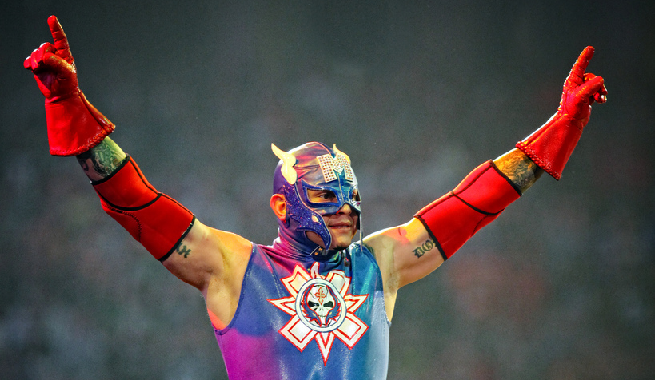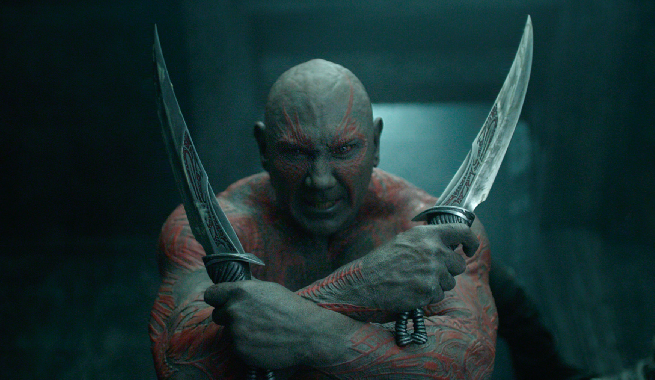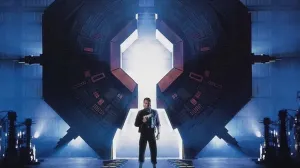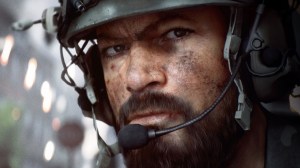Long before Marvel and DC dominated theatres and television, a different kind of superhero dominated the airwaves: professional wrestlers. The colorful heroes and villains of the wrestling world battled each other in front of live crowds, while captivating millions who tuned in on television. While professional wrestling’s popularity has faded somewhat in recent years, the “sport” still holds a unique spot in pop culture, mixing the athleticism of professional sports with the grandiose storylines and characters found in comic books.
Videos by ComicBook.com
Comics and wrestling have long had a deep and symbiotic relationship with each other. The latest example came this last week when Arrow star Stephen Amell jumped into the ring with WWE wrestler Stardust, setting up a superhero themed clash later this month. Many comic book fans are also fans of professional wrestlers, probably because in many ways, a professional wrestler is like a real life superhero. With bodies honed to physical perfection, wrestlers perform in distinctive costumes and perform theatrical aliases. Some wrestlers, especially those in the Mexican lucha tradition, wear masks to hide their identities from the public. Wrestlers, like superheroes, have distinctive fighting moves and abilities designed to wow fans with unique visual stunts and ridiculous action. And, with their colorful personalities and gimmicks, wrestlers enjoy the same rabid fandom as superheroes, with rival fan groups arguing over who would win while decked out in their favorite wrestler’s gear.
Much like superhero comics, wrestlers typically fall into one of two categories. Heroic wrestlers are called babyfaces, the heroes whom fans are supposed to root for. The babyfaces are opposed by villainous heels that resort to dirty tactics and cheating. Some babyfaces, like John Cena, are inherently noble by nature and take the role filled by Superman and other virtuous heroes in comic book stories. Other babyfaces, like Stone Cold Steve Austin or the Rock, are edgier and more anti-heroic, representing more dangerous heroes like Wolverine.
Some wrestling promotions take the superhero comparisons to a whole other level, introducing supernatural elements to their stories. The Undertaker, the WWE’s oldest active superstar, rose to fame while claiming to be impervious to pain. The Undertaker terrified opponents by taking punches and attacks without flinching and later claimed to have vague supernatural powers that allowed him to appear in the ring after a brief flicker of the stage lights. New wrestling promotion Lucha Underground goes even further, with characters such as a reincarnated dragon, an alien warrior from another planet, a master of death and a vampire color commentator. When wrestling gets weird, the lines between reality and fiction become even more blurred, creating a world not too unlike a superhero’s.
Many wrestlers are fans of superhero comics , and display that fandom in several different ways. Hulk Hogan chose his name after—well— Incredible Hulk actor Lou Ferrigno. But that was only eclipsed by a “Mr. America” costume and gimmick that strongly resembled Captain America. The wrestler Sting rose to fame after adopting the black and white face paint of The Crow, a comic book character from the early 1990s. Even new stars use comics as a starting point for their in ring personas. Current NXT champion Finn Balor sometimes dresses up as “The Demon” by smothering himself in face and body paint, which, all evolved from his earlier wrestling gimmick that tied him to Marvel’s supervillain Venom.
Other wrestlers use a superhero gimmick in the ring, playing homage to the superhero genre as a whole. Owen Hart often performed as the Blue Blazer, a super heroic character complete with a cape, mask and emblem. Towards the end of his career, Hart would actually “fly” into the ring after being lowered from the ceiling in a harness. Former WWE cruiserweight champion the Hurricane wore a superhero costume for most of his career, with his bare sleeves to expose the Green Lantern tattoo on his bicep. Blue Pants, a female wrestler working in NXT, got her name from the Shadowcat cosplay costume she wrestles in. Occasionally, wrestlers like Rey Mysterio or Kofi Kingston let their comic fandom flag wave by wearing costumes inspired by their favorite characters to important matches. When Rey Mysterio arrived dressed as Captain America at Wrestlemania 27, you knew he meant business.
With their massive physiques and menacing statures, professional wrestlers are often Hollywood’s go-to casting pool for brutish and violent comic book characters. Former WCW wrestler Tyler Mane played Sabretooth in the original X-Men film, Kevin Nash starred as the villainous Russian in the 2004 Punisher series, and Triple H played a vampire bodyguard in Blade: Trinity. But that’s just the start. Macho Man Randy Savage infamously cameoed as wrestler Bonesaw McGraw in the first Spider-Man film, losing to a super powered Peter Parker in a wrestling match. (But in our opinion, he won for the film’s best lines.) And of course, Dave Bautista starred in Guardians of the Galaxy as Drax the Destroyer, a character who wasn’t too dissimilar to the actor’s frightening “Batista” wrestling persona. Even Dwayne “the Rock” Johnson, one of the most successful wrestlers ever, will join the superhero movie ranks as Black Adam in DC’s upcoming Shazam film.
But it’s a two-way street, as you can see wrestling’s influence in the comics across several titles. Spider-Man, one of Marvel’s most recognizable characters, first tried his powers out at an open wrestling competition. The Thing was a world champion wrestler, competing in the Unlimited Class Wrestling Federation against other super powered wrestlers. The WWE even has a history of licensing comic books, giving comic publishers a chance to put the wrestlers inn situations too extreme for real life. Other comics focus on fictional wrestlers and promotions. Ultimate Muscle is a popular Japanese manga starring a group of wrestlers with otherworldly powers and abilities. And Image recently announced Ringside, a comic focusing on a fictional wrestling promotion and the drama that occurs in and out of the ring. With stunning visuals and built in drama, wrestling matches are natural fodder for comic book plots.
Occasionally, a wrestler will even transition their alter egos to comics industry professionals. Rob Van Dam, a well-known wrestler during the late 90s and early 2000s, briefly owned a comic book store before closing it in 2006. Raven wrote a wrestling themed Spider-Man issue featuring Crusher Hogan, the wrestler who Spider-Man fought in Amazing Fantasy #15. And now, CM Punk, a former World Champion wrestler known for aping the Thing’s “It’s Clobbering Time” catchphrase, is co-writing a Drax the Destroyer comic series. (Let’s hope he has a good thesaurus on hand.)
Outsiders often criticize professional wrestling for vaudeville theatrics, but if they stopped and paid attention, they’d see just how similar they are to comics. Really, how is wrestling any different that a superhero story, filled with aliens and bizarre powers and action too extreme for real life? With its use of stunning visuals and unique ability to tell an episodic story, a good wrestling match is just as engaging a a good comic book.
What are some of your favorite comics and wrestling crossovers? Let us know in the comments!

